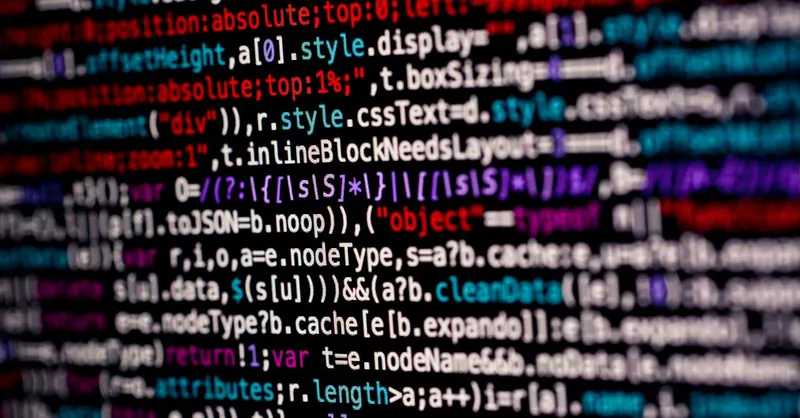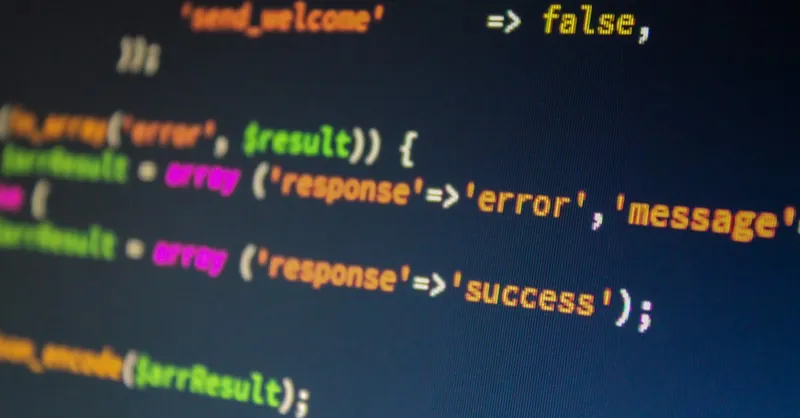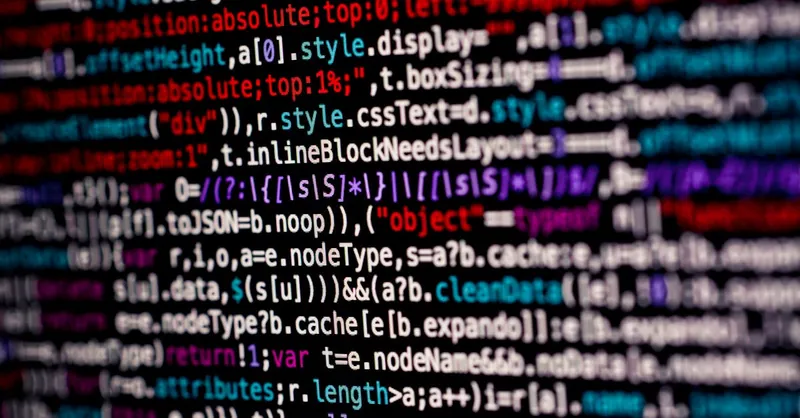How to Use Environment Variables in Django: A Practical Guide
Category: Django
Mastering Environment Variables in Django for Cleaner, Safer Apps
If you're an aspiring or intermediate Django developer struggling to keep your projects secure and scalable, understanding how to use environment variables is a game changer. You've likely encountered issues like accidental exposure of sensitive credentials, hard-to-maintain settings, or complex deployment hurdles. This post is crafted just for you — developers seeking straightforward, practical guidance to implement environment variables effectively in Django environments. We won't just skim the surface; instead, you'll get a clear step-by-step roadmap, from why environment variables matter to best practices using popular tools like python-decouple and django-environ. Whether you're building an API with Django REST Framework or a full-stack web app, harnessing environment variables will improve your development workflow, make your apps more secure, and simplify configuration management. This guide stands out by combining pragmatic code examples, real-world tips, and addressing common pitfalls, all tailored to your coding level. Dive in and transform your Django projects with environment variables the right way.
- Mastering Environment Variables in Django for Cleaner, Safer Apps
- Understanding Environment Variables: What They Are, Why They Matter in Django Projects
- Benefits of Using Environment Variables in Django: Security, Scalability, and Maintainability
- How Django Settings Work and Common Pitfalls of Hardcoding Sensitive Data
- Setting Up Environment Variables Locally: Using .env Files and Export Commands Across Platforms
- Integrating Environment Variables in Django Settings: Manual Methods vs. Libraries
- Working with python-decouple: Installing, Configuring, and Accessing Environment Variables
- Using django-environ for Advanced Configuration: Features and Practical Usage Examples
- Best Practices for Managing Environment Variables Across Development, Testing, and Production
- Debugging Environment Variable Issues in Django: Tips to Ensure Proper Loading and Security
- Deploying Django Projects with Environment Variables: Considerations for Heroku, Docker, and Other Platforms
Understanding Environment Variables: What They Are, Why They Matter in Django Projects
Environment variables are key-value pairs stored outside your actual codebase that provide configuration settings to your application at runtime. In the context of Django development, these variables hold critical information such as database credentials, secret keys, API tokens, and debug flags—data you never want hardcoded or exposed publicly. By externalizing these values, environment variables decouple sensitive configurations from your source code, boosting both security and flexibility across different development stages (local, staging, production).
Why exactly do environment variables matter so much in Django projects? Here are the main reasons:
- Enhanced Security: Avoid inadvertently committing secrets to version control systems like Git, reducing breach risks.
- Simplified Configuration Management: Easily switch settings between environments (development, testing, production) without altering any code.
- Improved Scalability and Maintainability: Centralize configuration in one place, making deployments and collaboration smoother.
- Support for Twelve-Factor App Principles: Follow best practices by treating config as environment-specific, aligning Django projects with modern cloud-native standards.
In practical terms, environment variables empower your Django apps to be more secure, portable, and adaptable—foundations for building robust web applications and APIs with Django REST Framework or any other stack. We'll soon explore how popular Python packages like python-decouple and django-environ help you leverage environment variables effortlessly while maintaining clean, readable settings.py files.

Image courtesy of Markus Spiske
Benefits of Using Environment Variables in Django: Security, Scalability, and Maintainability
Incorporating environment variables into your Django projects delivers significant advantages that go beyond simple configuration management. Foremost among these is security: by storing sensitive information like SECRET_KEY, database passwords, and API credentials outside your codebase, you drastically reduce the risk of accidentally exposing secrets in public repositories or logs. This practice aligns with Django’s security recommendations and modern DevOps standards, providing a robust safeguard against common vulnerabilities.
Beyond security, environment variables greatly enhance scalability. As your Django app grows—from local development to cloud deployments or containerized microservices—externalizing settings lets you seamlessly switch configurations without touching your source code. Whether you’re adjusting database endpoints, toggling debug modes, or enabling feature flags, environment variables empower you to adapt quickly to different environments.
From a maintainability perspective, this approach unifies your configuration management. Instead of scattering hardcoded values throughout your settings.py or risking configuration drift between developers and servers, environment variables centralize control in a standardized, easily auditable manner. This fosters cleaner, more modular codebases where settings remain declarative and agile, making onboarding, testing, and collaboration more straightforward for teams of any size.
In summary, leveraging environment variables in Django isn’t just a nice-to-have—it’s a critical best practice that shapes secure, scalable, and maintainable web applications and APIs, setting a solid foundation for professional-grade Django development.

Image courtesy of Kony Xyzx
How Django Settings Work and Common Pitfalls of Hardcoding Sensitive Data
Django’s configuration relies heavily on the settings.py file, which is essentially the backbone for defining all your project’s runtime parameters. This includes crucial values like SECRET_KEY, database configurations, email server settings, and third-party API keys. While it might be tempting to hardcode these sensitive values directly into your settings file for convenience, doing so introduces significant security and maintenance risks.
Why hardcoding sensitive data in Django settings is problematic:
- Security Vulnerabilities: Embedding secrets such as database passwords or API tokens directly in your
settings.pycan lead to accidental exposure, especially if your repository is shared publicly or with large teams. This opens the door to data breaches and unauthorized access. - Poor Portability: Hardcoded credentials make it difficult to adapt your application across multiple environments (development, staging, production). You end up juggling multiple versions of settings or relying on manual changes, which is error-prone and inefficient.
- Complicated Collaboration and Deployment: Teams often struggle with managing divergent settings files, increasing chances of conflicts or incorrect configuration. This friction slows down deployment pipelines and adds unnecessary overhead.
- Violation of Best Practices: Django’s own documentation and the broader web development community advocate for environment-specific configuration external to source code, aligning with the Twelve-Factor App methodology.
Instead, the recommended approach is to leverage environment variables to inject these sensitive values dynamically at runtime. By decoupling your secrets from your codebase, you ensure that your Django settings file remains clean, modular, and free of hardcoded secrets. This not only enhances security but also improves your ability to automate deployments, scale your projects, and maintain consistency across environments.
In the next sections, we'll explore practical methods to refactor your settings.py file to read from environment variables using libraries like python-decouple and django-environ, helping you sidestep these common pitfalls and upgrade your Django project's security posture efficiently.

Image courtesy of Antoni Shkraba Studio
Setting Up Environment Variables Locally: Using .env Files and Export Commands Across Platforms
To start harnessing environment variables in your Django projects, setting them up locally is essential for a smooth development workflow and consistency across environments. Two of the most common and effective techniques include using .env files and shell export commands—each with their own advantages depending on your platform and preferences.
Using .env Files for Local Configuration
.env files are simple plaintext files that store key-value pairs of environment variables in the format KEY=VALUE. They are especially helpful when combined with packages like python-decouple or django-environ, which can automatically parse these files and inject the variables into Django’s settings during runtime. Benefits of .env files include:
- Centralized configuration: All your local environment variables live in one easily manageable file.
- Exclusion from version control: By adding
.envto.gitignore, you prevent secrets from leaking into your repository. - Ease of sharing non-sensitive defaults: You can create
.env.exampletemplates with placeholder values for your team.
Example .env content:
DEBUG=True
SECRET_KEY=your-local-secret-key
DATABASE_URL=postgres://user:password@localhost:5432/mydb
To load .env files, you typically use a package in your settings.py like:
from decouple import config
DEBUG = config('DEBUG', default=False, cast=bool)
SECRET_KEY = config('SECRET_KEY')
DATABASE_URL = config('DATABASE_URL')
This approach allows seamless switching between local development and other environments where environment variables are set differently.
Exporting Environment Variables in Shells: Linux, macOS, and Windows
Alternatively, you can set environment variables directly in your shell before running Django commands. This is straightforward but can be ephemeral unless added to configuration files like .bashrc, .zshrc (Linux/macOS), or System Environment Variables (Windows).
Linux / macOS
Set variables on the command line temporarily:
export SECRET_KEY='your-secret-key'
export DEBUG=True
Or add them permanently in your shell profile:
echo "export SECRET_KEY='your-secret-key'" >> ~/.bashrc
echo "export DEBUG=True" >> ~/.bashrc
source ~/.bashrc
Windows (Command Prompt and PowerShell)
Set variables temporarily in CMD:
set SECRET_KEY=your-secret-key
set DEBUG=True
In PowerShell:
$env:SECRET_KEY = "your-secret-key"
$env:DEBUG = "True"
For permanent environment variables on Windows, use the System Properties dialog or PowerShell commands to update user or system variables.
Choosing the Right Approach for Your Workflow
- Use
.envfiles when you want an easy-to-manage, file-based solution that integrates cleanly with Django settings and keeps secrets out of version control. - Use shell export commands when working in ephemeral environments like CI/CD pipelines, Docker containers, or temporary debugging sessions.
By mastering both .env files and environment variable exports across platforms, you ensure your Django projects remain secure, flexible, and consistent no matter where they run—key factors for professional-grade development and deployment.

Image courtesy of cottonbro studio
Integrating Environment Variables in Django Settings: Manual Methods vs. Libraries
When it comes to incorporating environment variables into your Django settings.py, you have two primary approaches: manual methods using Python’s built-in os.environ, or leveraging specialized libraries like python-decouple and django-environ. Understanding the pros and cons of each helps you choose the most efficient, secure, and maintainable solution for your project.
Manual Method: Using os.environ
The simplest way to access environment variables in Django settings is to directly import the os module and retrieve values from os.environ. For example:
import os
SECRET_KEY = os.environ.get('SECRET_KEY', 'fallback-secret-key')
DEBUG = os.environ.get('DEBUG', 'False') == 'True'
DATABASE_URL = os.environ.get('DATABASE_URL')
Advantages of this approach:
- No additional dependencies or installation required.
- Full control over how variables are read, cast, and validated.
Limitations:
- Manual parsing and type conversion (e.g., strings to booleans or integers) is error-prone and repetitive.
- Does not automatically support loading variables from
.envfiles. - Lacks built-in safeguards for missing or malformed environment variables.
- Can clutter
settings.pywith boilerplate code, reducing readability.
Using Libraries: python-decouple and django-environ
To streamline environment variable management, many Django developers rely on dedicated libraries that abstract the common tasks of reading, casting, and validating environment variables, often with automatic .env file support.
python-decouple
- Simplifies access via the
configfunction with built-in type casting. - Integrates seamlessly with
.envfiles for local development. - Offers clean syntax and reduces boilerplate code.
Example:
from decouple import config
SECRET_KEY = config('SECRET_KEY')
DEBUG = config('DEBUG', default=False, cast=bool)
DATABASE_URL = config('DATABASE_URL')
django-environ
- Provides a
envobject with extensive parsing capabilities. - Supports complex types like URLs, lists, and database configurations out-of-the-box.
- Automatically loads
.envfiles if present. - Ideal for projects requiring robust type handling and Django-specific configurations.
Example:
import environ
env = environ.Env()
environ.Env.read_env() # reads .env file
SECRET_KEY = env('SECRET_KEY')
DEBUG = env.bool('DEBUG', default=False)
DATABASES = {
'default': env.db(), # parses DATABASE_URL
}
Choosing Between Manual and Library Methods
| Criteria | Manual (os.environ) |
python-decouple / django-environ |
|---|---|---|
| Ease of Use | Requires manual parsing and error handling | Automatic parsing, type casting, and validation |
| Dependency Overhead | No external packages needed | Additional packages required |
Support for .env |
None | Built-in .env file loading |
| Configuration Complexity | Best for simple or small projects | Scales well for production-grade, complex settings |
| Maintenance | Higher due to boilerplate and error-prone code | Cleaner and more maintainable settings files |
For most professional Django projects, especially those adhering to Twelve-Factor App principles and aiming for secure and scalable deployments, using a library like python-decouple or django-environ is highly recommended. These tools reduce the risk of configuration errors, improve readability, and ensure your environment variables are handled robustly across local, staging, and production environments. However, for minimal or experimental projects, manual methods might suffice.
In the following sections, we will provide step-by-step examples and best practices for implementing both approaches, helping you integrate environment variables into Django settings with confidence and clarity.

Image courtesy of Pixabay
Working with python-decouple: Installing, Configuring, and Accessing Environment Variables
To effectively manage environment variables in your Django projects, python-decouple stands out as a lightweight, user-friendly solution that simplifies loading configuration data while keeping your settings.py clean and maintainable. This library enables you to seamlessly read environment variables from .env files or the system environment, providing automatic type casting and default values to avoid common errors.
Installing python-decouple
Getting started with python-decouple is straightforward. Install it via pip with:
pip install python-decouple
This single dependency brings powerful handling of environment variables without adding unnecessary complexity.
Configuring python-decouple in Your Django Project
- Create a
.envfile at the root of your Django project (wheremanage.pylives) to store your environment variables securely. Example:
DEBUG=True
SECRET_KEY=your-secret-key
DATABASE_URL=postgres://user:password@localhost:5432/mydatabase
-
Add
.envto your.gitignoreto prevent the file from being committed to version control and exposing sensitive data. -
Modify your
settings.pyto import and use python-decouple’sconfigfunction:
```python from decouple import config, Csv
DEBUG = config('DEBUG', default=False, cast=bool) SECRET_KEY = config('SECRET_KEY') DATABASE_URL = config('DATABASE_URL') ALLOWED_HOSTS = config('ALLOWED_HOSTS', default="", cast=Csv()) ```
- The
configfunction reads the environment variable by name. - The
defaultparameter ensures your app has fallback values if a variable is missing. - The
castparameter automatically converts strings to the desired Python type, such as bool or list.
Accessing Environment Variables with python-decouple
Utilizing python-decouple eliminates the need to manually parse environment variables or write verbose conditional logic. It also supports advanced features like:
- List Parsing: Using the
Csvcast, you can define variables likeALLOWED_HOSTS=localhost,127.0.0.1in.env, which will be parsed as a Python list. - Type Safety: Automatically converting environment variable strings to booleans, integers, floats, or other Python types reduces bugs due to type mismatches.
- Seamless Fallbacks: Gracefully handling missing variables via defaults prevents runtime errors and improves the resilience of your settings.
By integrating python-decouple, Django developers gain a robust yet minimalistic toolset for environment variable management that enforces security best practices and streamlines configuration. It is especially helpful for projects migrating away from hardcoded settings, as well as teams aiming for consistent, environment-specific setups without cluttering their codebase. Next, we will delve into practical examples demonstrating python-decouple in action within real-world Django configurations.

Image courtesy of Christina Morillo
Using django-environ for Advanced Configuration: Features and Practical Usage Examples
For Django developers seeking a robust environment variable management solution, django-environ is an excellent choice that extends beyond basic .env parsing to provide powerful configuration capabilities tailored specifically for Django projects. Unlike simpler libraries, django-environ offers seamless integration with Django’s settings, advanced type parsing, and built-in support for complex configuration types such as databases, caches, email backends, and more—all while promoting clean, maintainable, and secure code.
Key Features of django-environ
- Automatic
.envSupport: Reads environment variables from a.envfile if present, falling back to system environment variables transparently. - Comprehensive Parsing: Converts strings into booleans, integers, floats, lists, sets, and dictionaries effortlessly.
- Database URL Parsing: Parses
DATABASE_URLstrings into Django-styleDATABASESconfigurations, simplifying database setup across multiple environments. - Cache and Email Settings: Supports parsing of cache URLs (
CACHE_URL) and email configurations (EMAIL_URL), allowing decentralized configuration management. - Type Casting and Defaults: Provides safe casting methods with defaults, preventing runtime errors from missing or malformed environment values.
- Environment Mode Handling: Enable or disable debug mode dynamically and manage environment-specific flags with ease.
- Support for Nested Dictionaries and Lists: Enables complex settings like feature flags or third-party API configurations to be stored as structured data.
Practical Example: Configuring Django Settings with django-environ
Here is how you can leverage django-environ to configure a typical Django project securely and cleanly:
import environ
# Initialize environment variables
env = environ.Env(
DEBUG=(bool, False),
ALLOWED_HOSTS=(list, []),
)
# Read .env file in the project root (optional but recommended)
environ.Env.read_env()
# Access simple variables
DEBUG = env('DEBUG')
SECRET_KEY = env('SECRET_KEY')
# Configure allowed hosts as a list
ALLOWED_HOSTS = env.list('ALLOWED_HOSTS')
# Configure databases via DATABASE_URL environment variable
DATABASES = {
'default': env.db()
}
# Configure cache with CACHE_URL environment variable (optional)
CACHES = {
'default': env.cache(),
}
# Configure email backend via EMAIL_URL environment variable (optional)
EMAIL_CONFIG = env.email_url()
EMAIL_BACKEND = EMAIL_CONFIG.get('EMAIL_BACKEND')
EMAIL_HOST = EMAIL_CONFIG.get('EMAIL_HOST')
EMAIL_PORT = EMAIL_CONFIG.get('EMAIL_PORT')
EMAIL_USE_TLS = EMAIL_CONFIG.get('EMAIL_USE_TLS')
EMAIL_HOST_USER = EMAIL_CONFIG.get('EMAIL_HOST_USER')
EMAIL_HOST_PASSWORD = EMAIL_CONFIG.get('EMAIL_HOST_PASSWORD')
Why Use django-environ in Your Django Projects?
- Reduces Complexity: Effortlessly manage all your environment-sensitive configuration in one place, reducing clutter in
settings.py. - Promotes Security Best Practices: Keeps secrets and environment specifics out of version control, keeping your Django projects secure.
- Facilitates Multi-environment Deployments: Easily switch between development, staging, and production setups by altering environment variables without touching code.
- Handles Complex Configuration Types Naturally: No need for manual parsing; handles lists, URLs, and nested configurations natively.
- Enhances Developer Productivity: Simplifies local development setups with
.envfiles while supporting production-grade configurations seamlessly.
By incorporating django-environ, your Django settings become more declarative, secure, and portable—qualities essential for modern Django REST Framework APIs, cloud-native deployments, and scalable web applications. This tool empowers developers to adopt Twelve-Factor App principles fully, facilitating consistent and error-free configuration management across all environments and team members. In subsequent sections, we'll dive deeper into best practices for managing .env files securely and organizing environment-specific settings with django-environ for maximum effectiveness.

Image courtesy of Christina Morillo
Best Practices for Managing Environment Variables Across Development, Testing, and Production
Effectively managing environment variables across development, testing, and production environments is crucial for building secure, scalable, and maintainable Django applications. Adopting consistent practices prevents configuration drift, reduces deployment errors, and safeguards sensitive information throughout your project’s lifecycle.
1. Separate Environment-Specific Variables Clearly
Maintain distinct environment variable configurations for each stage—local development, CI/CD testing, staging, and production—to avoid accidental leakage or misconfiguration. Use dedicated .env files like .env.local, .env.test, and .env.prod to store environment-specific settings when working locally. For production, leverage platform-specific environment variable management (e.g., AWS Secrets Manager, Heroku Config Vars, Docker secrets) rather than committing any secrets to code or repository.
2. Store Secrets Securely and Avoid Committing Them
Always exclude .env files containing sensitive credentials from version control by adding them to .gitignore. For versioned configurations, create .env.example files with placeholder values that document required environment variables without exposing secrets. In production, use encrypted secrets management tools or environment configuration mechanisms provided by your deployment platform to inject variables securely.
3. Implement Environment Variable Validation and Defaults
To prevent runtime crashes or unpredictable behavior due to missing or malformed variables:
- Use validation features provided by libraries like
django-environorpython-decoupleto enforce required keys and correct types. - Provide sensible default values only for non-sensitive variables (e.g.,
DEBUG=Falsein production). - Log or raise meaningful errors early if critical environment variables (like
SECRET_KEYorDATABASE_URL) are absent.
4. Automate Environment Configuration in CI/CD Pipelines and Containers
Ensure your Continuous Integration and Continuous Deployment pipelines consistently inject the correct environment variables using secure vaults or encrypted secrets. When using Docker or Kubernetes, leverage native secrets management and environment injection mechanisms rather than embedding secrets inside images or settings.py. This approach increases portability and safety of your deployments.
5. Structure settings.py to Load Environment Variables Gracefully
Design your Django settings to:
- Clearly separate base settings from environment-specific overrides (e.g.,
base.py,development.py,production.py). - Use environment variables exclusively for sensitive values and flags that differ between environments.
- Avoid conditional logic scattered throughout the file by centralizing environment variable access logic using helper functions or configuration libraries.
By adhering to these best practices for managing environment variables, you can confidently maintain a single codebase that adapts smoothly across all stages of your Django project’s lifecycle—boosting security, reducing operational overhead, and improving development velocity. Ultimately, a disciplined environment variable strategy is key to professional-grade Django web development and seamless deployments.

Image courtesy of Markus Spiske
Debugging Environment Variable Issues in Django: Tips to Ensure Proper Loading and Security
Ensuring that environment variables load correctly and securely in your Django project is crucial for maintaining application stability and protecting sensitive data. Debugging environment variable issues effectively requires a systematic approach to identify common pitfalls and verify configurations across different environments.
Common Causes of Environment Variable Loading Failures
- Variables Not Set or Misspelled: A frequent issue is the absence of expected variables in the environment or typos in variable names either in the
.envfile or in yoursettings.pycode. Always double-check spelling consistency. .envFile Not Loaded or Ignored: When using tools like django-environ or python-decouple, forgetting to call the appropriate.envfile loading methods (e.g.,environ.Env.read_env()) or misplacing the.envfile can prevent variables from being parsed.- Incorrect File Placement or Permissions:
.envfiles should reside at the project root or an explicitly defined location with proper read permissions. Also, ensure the.envfile is not committed to version control, yet accessible by the runtime environment. - Casting or Parsing Errors: Misconfigured casting parameters (e.g., casting string "False" to boolean) can produce unexpected behaviors. Verify the casting logic aligns with the environment variable formats.
- Overriding by OS or Platform Settings: In containerized or cloud environments, environment variables defined externally might override local
.envvalues, causing confusion during debugging.
Best Practices to Troubleshoot and Secure Environment Variable Usage
- Explicitly Log Loaded Variables: During development, output the values of critical environment variables (except sensitive ones) right after loading them in
settings.pyfor verification. - Use Debugging Tools and Commands:
- Run
printenv(Linux/macOS) orset(Windows CMD) to inspect all current environment variables. - Query variables directly within Django shell using
import os; print(os.environ.get('VARIABLE_NAME')). - Validate Environment Variables Early: Utilize validation features from libraries like
django-environthat raise errors if required variables are missing or malformed, preventing obscure runtime failures. - Avoid Hardcoding Sensitive Defaults: Defaults in
settings.pyshould not expose secrets or weaken security (e.g., a genericSECRET_KEY). Favor mandatory environment variable presence with clear error messages. - Secure Handling in Logs and Errors: Never print sensitive values such as
SECRET_KEYor passwords in logs or error tracebacks accessible in production environments. - Version Control Hygiene: Continuously audit
.gitignoreto ensure.envor similar configuration files with secrets remain excluded from repositories. - Test Across Environments: Reproduce the environment variable loading in local, staging, and production setups to catch discrepancies early.
By applying these debugging and security-focused strategies, you can ensure proper loading and handling of environment variables in Django, minimizing common errors that cause application misconfigurations or inadvertent exposure of secrets. A rigorous validation and verification approach makes your Django projects more reliable, secure, and easier to maintain as they scale from development to production.

Image courtesy of Markus Spiske
Deploying Django Projects with Environment Variables: Considerations for Heroku, Docker, and Other Platforms
When it comes to deploying Django applications, managing environment variables properly is paramount to ensure security, flexibility, and ease of configuration across diverse hosting platforms such as Heroku, Docker, and traditional VPS setups. Each deployment environment has unique mechanisms and best practices for injecting environment variables, and understanding these differences is essential to maintain your Django project's robustness and adherence to security standards.
Environment Variables on Heroku
Heroku, a popular platform-as-a-service (PaaS) for Django apps, uses Config Vars to manage environment variables. These are key-value pairs that you can set via the Heroku dashboard or CLI:
- Set variables using the Heroku CLI:
bash heroku config:set SECRET_KEY='your-production-secret' DEBUG=False DATABASE_URL='postgres://user:pass@host:5432/dbname' - These variables are automatically injected into the runtime environment of your Dynos, making them accessible to Django through
os.environor libraries like django-environ. - Importantly, never commit sensitive Heroku config vars to your repository; keep them exclusively managed within Heroku.
- Heroku encourages using environment variables to leverage the Twelve-Factor App methodology, making configuration decoupled from code.
Managing Environment Variables with Docker
In containerized deployments using Docker, environment variables can be provided in several ways to support both development and production use cases:
-
Dockerfile ENV Instructions: Adding environment variables directly in the
DockerfileviaENVis possible but discouraged for secrets since it bakes sensitive data into the image, which risks exposure. -
Docker Compose
environmentSection: Defining environment variables indocker-compose.ymlunder theenvironmentsection allows per-service configuration. However, storing secrets here should still be handled with caution. -
.envFiles with Docker Compose: Docker Compose can read a local.envfile, but this file should never be committed to Git if it contains secrets. -
Docker Run Commands with
-eFlags: You can pass environment variables at runtime usingdocker run -e SECRET_KEY=...for ephemeral or dynamic configurations. -
Using Docker Secrets and Vaults: For production-grade security, Docker Swarm and Kubernetes support secrets management with encrypted storage and injection, providing superior secret handling than passing plain environment variables.
Key Deployment Best Practices for Environment Variables
- Avoid Hardcoding Any Secrets in Docker Images or Heroku Slugs: Secrets belong in environment variables or dedicated secret stores only.
- Use Consistent Variable Names Across Development and Production: This minimizes configuration errors and facilitates smoother deployments.
- Leverage Platform-Specific Secrets Management: Tools like AWS Parameter Store, HashiCorp Vault, or Kubernetes Secrets offer enhanced security for sensitive environment variables.
- Automate Environment Variable Injection in CI/CD Pipelines: Ensure your deployment pipelines securely provide the necessary environment variables without manual intervention.
- Monitor and Audit Configurations: Regularly review injected environment variables to avoid stale or exposed secrets and maintain compliance with security policies.
By aligning environment variable management strategies with your deployment platform, you strengthen your Django application's security, flexibility, and scalability. This disciplined approach prevents common pitfalls such as accidental secret exposure, configuration drift, and deployment failures, thus enabling reliable, professional-grade Django releases whether using Heroku, Docker, or other hosting infrastructures.

Image courtesy of Johnny Mckane
